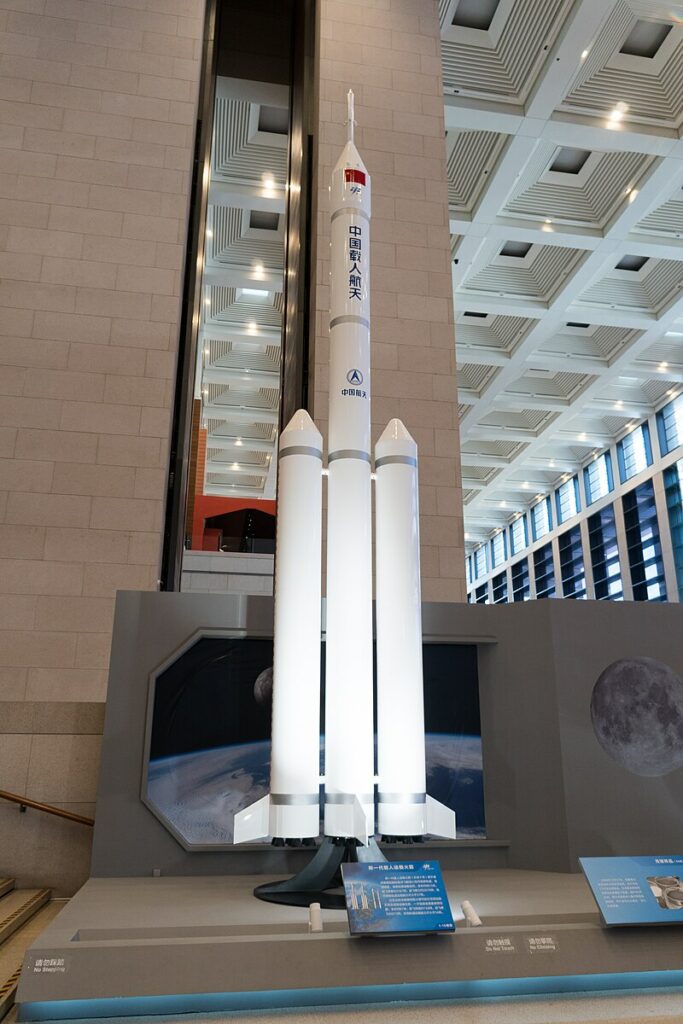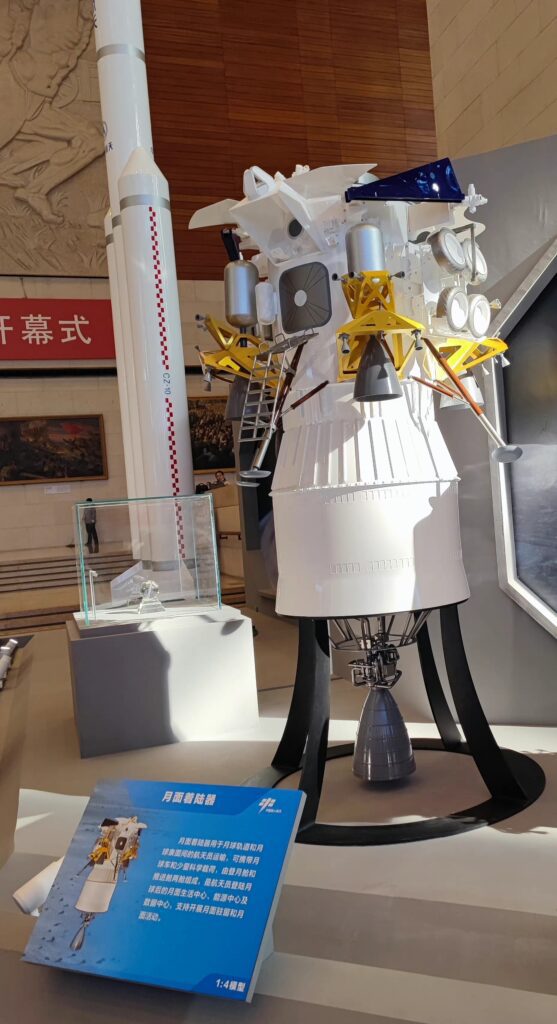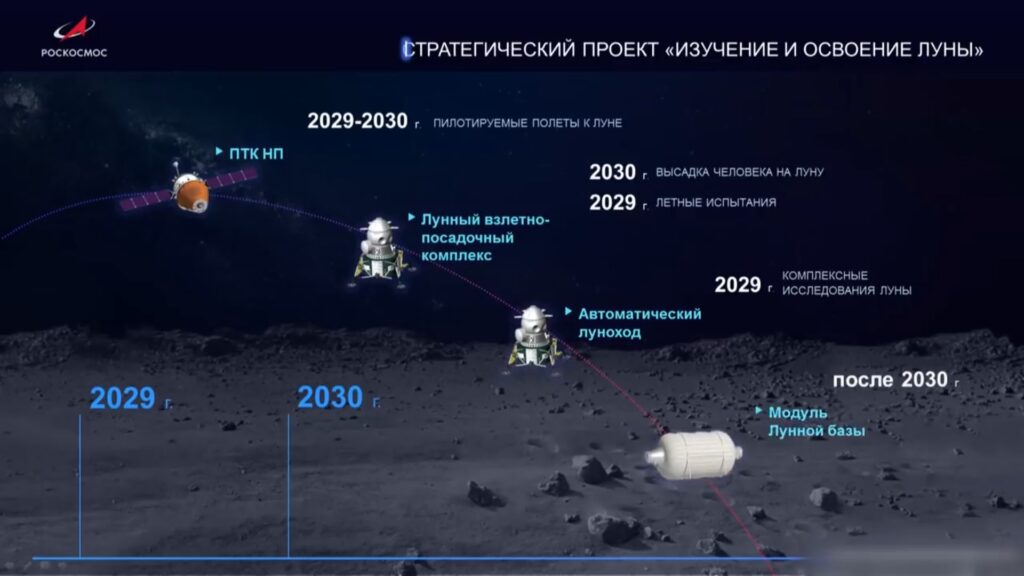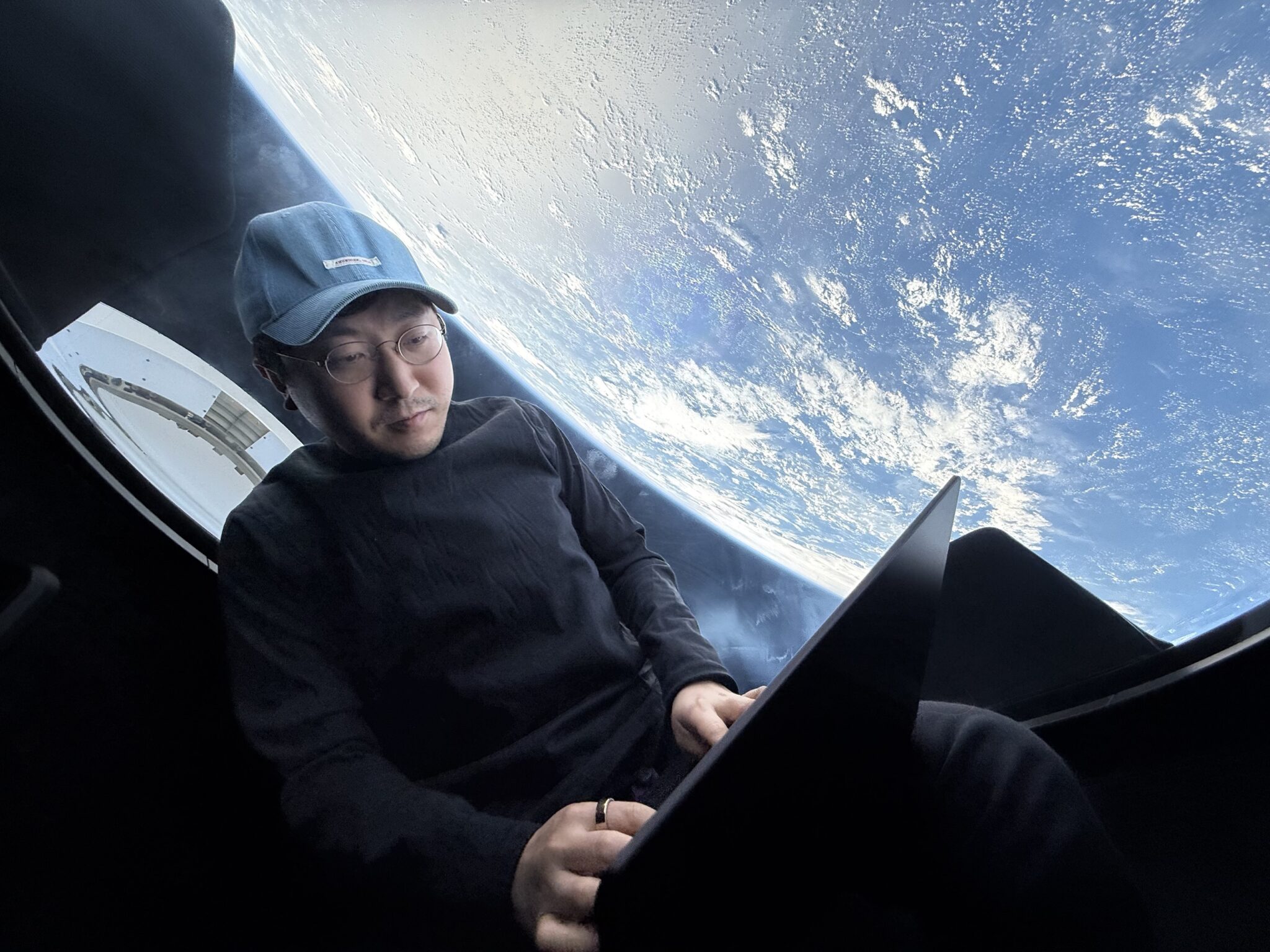There have been some marked changes in the race (back) to the Moon over the past year. But the question on everyone’s minds still is: who will get there first? David Todd provides an answer in the annual Seradata analysis of “The Great Space Race” as well as tackling a similar question on Mars.

Buzz Aldrin’s side of the Apollo 11 Lunar Module cockpit. Note the many switches. Courtesy: NASA
Seradata’s analysis judges each space programme based on its technological ability, financial and other resources, national will and, most importantly, the progress of its project. We put the various nations’ chances in the form of bookmakers odds. For example, a nation rated as an “even money” (50% chance) of landing humans on Mars first would have odds of 1-1 ‘evens’ (1/1+1= 50%). A nation with 4-1 odds would have a 20% chance (1/1+4 = 20%) and so on.
The US throws away its lunar lead as odds move out to 3-1 (from 5-4) but its Mars odds still make it 1-2 odds-on favourite

SLS Block 1 on its pad. Courtesy: NASA
The US started by picking the misguided Ares I and V two-launcher concept as part of its Project Constellation for human lunar, and later Mars, exploration. But it soon realised that it only had enough cash to build one rocket design, and then only as one part of a lunar exploration architecture: a heavy lift launch vehicle (HLV), a spacecraft to transfer astronauts and a landing craft. Having given up on the Ares rocket pair, NASA, under pressure from ex-Apollo astronauts such as Neil Armstrong and Gene Cernan, as well as the US Senate, reluctantly agreed to build a new HLV with the proviso that it use former Space Shuttle technology.
Unfortunately, NASA eschewed going for a cheaper wingless Shuttle-derived concept, dubbed ‘Sidemount’, on the grounds of limited development potential, opting instead for a new inline design called SLS. Hindsight says that this was the wrong choice – Sidemount would have made an ideal interim HLV – but at the time it was logical as SpaceX’s much better Super Heavy/Starship combination was not even a concept. The SLS project has since become controversial given its eventual very high cost, which now equates to over US$3 billion per SLS flight – about 100 times more than the launch cost of the SpaceX offering. Critics especially note the wasteful nature of the SLS as exemplified by the bizarre US$3.5 billion cost of modifying the former Shuttle RS-25 reusable engines to make them “expendable”.
Still, at least NASA was going to get a human-rated heavy lift rocket. It already had the Orion spacecraft, built by Lockheed Martin, which was salvaged from Project Constellation. Nevertheless, there was not enough money to build Orion’s service module. At this point, NASA made its second mistake: it turned to the European Space Agency (ESA) to build it using the ATV cargo craft as a basis. Unfortunately, this ATV-based service module is not powerful enough to reach a stable low lunar orbit as it is designed only to reach higher orbits where the Lunar orbiting “Gateway” space station will be based. This limitation has meant that a lunar craft will need to transfer itself to and from a high lunar orbit to a lower one, before it even attempts to land.
Nevertheless, despite these woes, by the end of 2022 the US had most of the elements in place to mount orbital visits to the Moon. This has been proven by the success of the uncrewed Artemis I mission, launched aboard the maiden flight of the SLS in November 2022. While overall, the mission was a success, there remain concerns about the apparent uneven charring of the thermal protection heat shield which might yet delay the next mission, a crewed flight called Artemis II. It is planned to make an “around the Moon” flight in late November 2024. If that flight is successful, a landing attempt via Artemis III is planned to take place in December 2025. However, there is still one thing missing that could prevent this landing attempt from happening: a lunar lander, officially titled the Human Landing System (HLS). And it is not ready yet.

SpaceX Starship-based Human Landing System (HLS) for NASA. Courtesy: NASA
Instead of going for a simple two-person lander using storable propellants (albeit with a transfer stage), NASA selected a version of the cryogenic SpaceX Starship for its lunar lander – with a second one ordered from Blue Origin later. A smaller lander could have reached the Moon using an ICPS stage-equipped Falcon Heavy rocket launcher.
This was NASA’s third, and most recent, mistake. The SpaceX and Blue Origin designs may be good long-term bets for lunar exploration and construction missions, but they both use cryogenic propulsion whose storage and refuelling/propellant transfer technology is not yet perfected. Thus, Artemis III’s official landing date in December 2025 is unlikely to be achieved. Even 2026 would be optimistic. During a press conference to introduce the Artemis II crew at NASA’s Kennedy Space Center, James (Jim) Free, NASA’s Associate Administrator for Exploration Systems Development, acknowledged concerns about the time-line of SpaceX’s cryogenic fuel transfer test programme and the potential lateness of SpaceX’s lander. NASA is already preparing the ground to make the Artemis III mission a non-landing mission. “We may end up flying a different mission (for Artemis III),” admitted Free. This would mean that Artemis IV would become the landing attempt later in the decade.
In other words, the field could now be left open to China to win this lunar race if it can get its own two launch interim projects up and running fast enough. This is the reason why the US odds for the next human landing on the Moon have lengthened from 5-4 favourite to 3-1.
There is better news for NASA for the Mars race. NASA studies have long noted that a rocket with a payload capacity of 200 metric tons to low Earth orbit would be needed. The Super Heavy/Starship combination achieves this in expendable form. While we have doubts about Elon Musk’s Starship Mars landing and in-situ refuelling architecture, if Super Heavy/Starship is used as a heavy lift rocket for the construction and initial boost phases of an early human Mars landing mission, it will become a key part of Mars exploration. There are even signs that China has cottoned on and has now decided to copy Super Heavy/Starship for its Long March 9 – a super heavy lift rocket which was originally going to be based on SLS.

Dr Bob Parkinson’s plan: elements needed for basic human landing mission to Mars. Courtesy: Bob Parkinson/British Interplanetary Society
Thus we expect that a more “conventional” Mars exploration mission – perhaps looking like Dr Bob Parkinson’s (British Interplanetary Society) concept – will be used by NASA. Some unconventional technology may have a place on such a mission, as NASA is planning to test (with DARPA) nuclear thermal propulsion, which could be a way to cut journey times to the planet. As such we still have the US firmly in the favourite position at an unchanged 1-2 odds.
‘Copycat’ China learns from mistakes of the US, becoming ‘evens’ (1-1) favourite (from 5-4) for Moon but 4-1 for Mars

Chinese human-carrying lunar lander concept plus rover. Courtesy: CNSA
China announced in May that it planned to land its astronauts on the Moon by 2030. While a two-launch architecture using interim launch vehicles (SLS and a modified Falcon Heavy) with a small lunar lander would help the US reach the Moon in a short amount of time, China is doing all of this for itself.
China originally planned to mount its lunar landing attempt with a super heavy lift launch vehicle called Long March 9 (CZ-9). This was to be a first stage and booster expendable design using a Lox/liquid hydrogen upper stage. It was similar to the SLS in concept – albeit using Lox kerosene for the first and booster stages instead of SLS’s solid rocket boosters and a Lox/Liquid Hydrogen core. However, since seeing the advances made by Elon Musk with his reusable Super Heavy/Starship design, China has now opted to copy this design for its Long March 9. But that will take time, and China wants to get to Earth’s natural satellite earlier than 2030. The nation has learned from NASA’s mistakes in waiting for the perfect rocket and decided to repurpose its Long March 5 hardware to build an interim launch vehicle called Long March 10 (CZ-10).

Model of the Long March 10 as shown in the National Museum of China. Courtesy: Wikipedia
The Long March 10 rocket (formerly known as Long March 5DY) looks very similar to a Falcon Heavy. It consists of three 5 m diameter core/booster stages plus two further stages. Each of the first/booster stages is powered by seven Lox/kerosene burning YF-100K engines. A middle stage carries two YF-100M engines while an upper stage employs three YF-75E engines using Lox/liquid hydrogen as propellants. Long March 10 will be able to put 70 metric tons into low Earth orbit (LEO) and 27 metric tons into a Trans Lunar Injection (TLI) trajectory. This interim rocket will be used in a two-launch strategy for human moon missions: one to deliver the landing craft/propellant stage to lunar orbit and one for the crew transfer spacecraft.

Model of the proposed Chinese human lunar lander and its propulsion stage. Courtesy: Cosmic Penguin
The crew spacecraft and landing craft/propulsion stage, each weighing 26 metric tons, dock in lunar orbit ahead of a moon landing attempt. There is no Apollo style ascent module substage of the lunar lander. Instead, after the landing and excursion activities, the landing module lifts itself off in one piece using four 7.5 kN engines. It then redocks with the crew spacecraft which receives the crew to make their journey back to Earth. This plan is, in effect, what the US should have done for its early lunar landers with either two Sidemount launches or via an SLS and modified Falcon Heavy. As part of the missions, an Apollo style lunar rover is being designed to allow astronauts to make 10 km surface excursions. Using its Long March 9 rocket, China eventually aims to build a surface base on the Moon.
So, with its Long March 10 interim heavy lift rocket rocket underway and a two-stage preliminary version (Long March 10A) scheduled to fly next year, China is increasingly close to being able to mount a human mission. Seradata’s prediction is that an attempt may be made in 2027-28, which could beat the US given that an Artemis landing mission – currently Artemis III – is likely to miss its December 2025 launch date by three or more years. As such we assess China to be the new even-money (1-1) favourite, from being 6-4 joint favourite with the US last year.
China has no official plans to land on Mars – yet. The chance to take the space prize from the US may tempt it to make an attempt. However, Long March 9 must be completed before China will officially consider such a plan, leaving the nation the 4-1 outsiders in that race.
Russia starts heavy lift rocket project worried about being left behind but then spends its cash on war with Ukraine – lunar odds 33-1 (from 20-1); Mars odds 20-1 (from 10-1)
One time competitor to the US (in its Soviet Union entity) in the race to the Moon, Russia now only talks a good fight when it comes to human space exploration – but delivers nothing. Putin formally decreed in 2018 that Roscosmos should start work on a 140 metric ton LEO payload-class heavy lift launch vehicle. The Yenisei/Don rocket project is officially underway with its first launch from Vostochny aimed for 2028. The rocket uses six booster “first” stages, each powered by two Lox/kerosene RD-171MV engines around a central single RD-181MV core acting as a second stage. A third stage employs a single RD-180 engine, again using Lox/kerosene as propellants. A fourth stage has a single Lox/kerosene RD-11D58M engine.

Russia’s schedule to land its cosmonauts on the Moon. Courtesy: Roscosmos
Nevertheless, Russia’s human space programme is now in disarray. The mountain of cash it once generated from large oil revenues is rapidly being depleted by the nation’s destructive invasion of, and war with, Ukraine, with little left to fund a large rocket, so much of the work on this rocket is now stalled. Likewise, there has been no announcement of the completion of the Federatsiya, Russia’s planned successor to the Soyuz human-carrying spacecraft.
Update on 28 August: While its chance of beating the US and China back to the Moon is very much diminished, Russia proved that it can still mount lunar landing expeditions – albeit unmanned ones. At 2310 GMT on 10 August, a Soyuz 2-1b/Fregat M rocket sent Russia’s Luna 25 spacecraft into orbit from Vostochny cosmodrome in far eastern Russia. Unfortunately, the mission ended in tears as the lander was lost during a manoeuvre before the landing attempt. Having lost the Luna 25 mission, Russian then officially announced its intention to land Russian cosmonauts on the Moon soon after 2030 and published an image of its plan including the development of a lunar lander.
As such, Seradata cannot see that Russia will be in a position to launch a human lunar mission anytime soon. We have moved its odds outwards accordingly. So Russia’s lunar return odds are lengthened again from last year’s estimate of 20-1 to 33-1. Mars race odds are similarly lengthened from 10-1 to 20-1.
India’s human space programme is delayed and it has no lunar programme: India 80-1 for Moon and 200-1 (from 500-1) for Mars

Chandrayaan-3’s Pragyan lunar rover rolls itself onto the Moon’s surface. Courtesy: ISRO
The human space programme in India is severely delayed. However, India’s first human launch (to low Earth orbit) is expected to take place by the end of 2024 after an initial uncrewed GLSV Mk III launch of an unmanned flight carrying Gaganyaan spacecraft later this year.
Updated on 24 August: Don’t count India out completely. Its prowess at reaching the Moon was proved by its successful unmanned landing of a lander and rover on the Chandrayaan-3 mission on 23 August. Nevertheless, with little time left India remains an outsider and stays at 80-1 to return humans to the Moon first.
For a human Mars mission, its chance has risen slightly to 200-1 (in from 500-1). It has already demonstrated that it can reach Mars – albeit with its unmanned Mars Orbiter Mission (MOM),aka Mangalyaan. Even so, while India’s government is gaining kudos both at home and abroad for its space achievements, and will be tempted to try some even more spectacular space exploration, it is under fire for spending money on this rather than on the health and welfare of its poorest people.
Updated on 19 October 2023: Definitely don’t count out India as it has now formally become a runner. It has just announced its intention to land its ‘gaganauts’ (the nickname for its astronauts) onto the Moon by 2040. Mind you, until it has a larger HLV-class rocket it has no significant chance of a landing before the other competitors so its odds remain unchanged.
The other runners: 1000-1 bar for both Moon and Mars.

The British have long been interested in human lunar landings as R. A. Smith’s landing craft design in 1947 showed. It directly influenced Grumman’s Apollo lunar module design. Courtesy: R A. Smith/British Interplanetary Society
While there is increasing irritation in Europe that it does not yet have a human transportation system, it remains far behind the US and China in its ability to mount a human landing, whether on the Moon or Mars. It probably has the know-how but not enough cash in its various space programmes. For the time being, Europe, via the European Space Agency, is happy to cadge rides to the Moon on NASA’s Artemis programme. The same applies to Japan and to the UK, especially given that it is a junior member of ESA’s astronaut programme. Mind you, in being a junior member it will have to wait quite a while to reach the lunar surface with one of its astronauts, that is until a French, German and Italian astronaut has reached the Moon first.
Final Comment: It did not have to be this way…but our money is on China

Apollo image remade with China having its moment on Moon. Courtesy: Internet via Asia Times
As we noted last year, the Moon offers significant commercial and scientific opportunities ranging from astronomy and space tourism to raw materials via mining. So, it is near certain that humans will walk again on the Moon’s surface within the next 15 years – and probably before the end of the decade.
As to which nationality will make those coveted strides: since the US has elected to go for a large cryogenic lunar lander using SpaceX’s design (or Blue Origin’s), there will be an inevitable delay. Meanwhile, China is acting out a much wiser and faster strategy for its initial smaller lunar exploration mission by using what it has and a small landing craft. Seradata’s estimate is that the China Manned Space Flight Office may be able to attempt a lunar landing by 2028 and will be first to reach there.
Who gets there first is deemed to be important, especially given that the South Pole is where both Chinese ‘taikonauts’ and US astronauts are heading given its water ice reserves. NASA Administrator Sen Bill Nelson declared during the recent NASA press conference to introduce the Artemis II crew: “We are in a space race with China.” In doing so, he accepted that Russia was unlikely to be in a position anytime soon to make a similar human lunar landing attempt.
Nelson emphasised the urgency of getting back to the Moon first. Making reference to China’s attempts at territorial land grabs in the South China Sea, Nelson openly worried that if China reached the South Pole first, it might declare it as its territory and prevent others from making bases there. “I don’t want China to get to the South Pole and then say, ‘this is ours, stay out’”, declared Nelson.
While the Moon race is definitely on, and with China probably now in the lead, Mars is a longer term shot for all. A human mission to Mars is entirely feasible – especially due to Elon Musk and his masterpiece Starship/Super Heavy combination, which China is about to copy for its own longer-range space exploration aims including a lunar surface base and an eventual human mission to Mars. Our bet is that Chinese space engineers are now already examining mission architectures to do this latter mission.
Let the Great Space Race to Mars begin.







